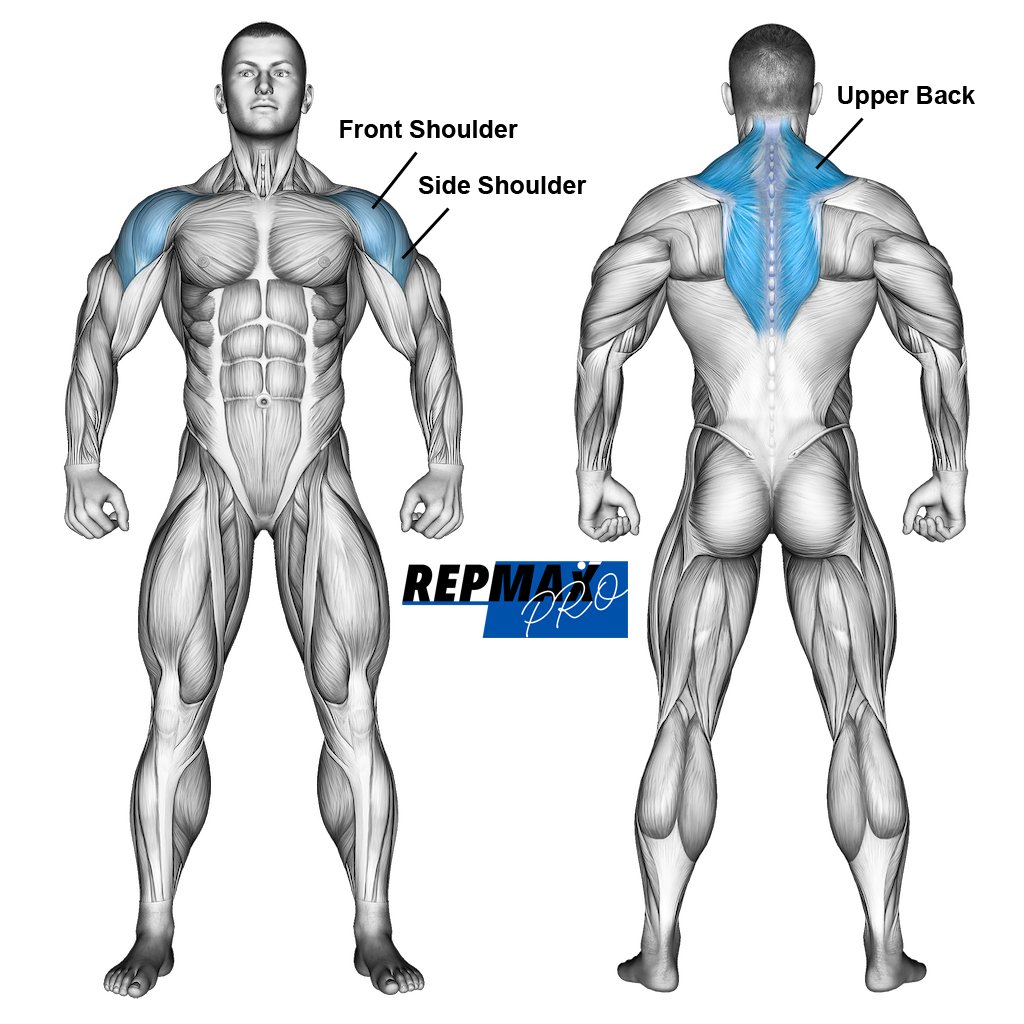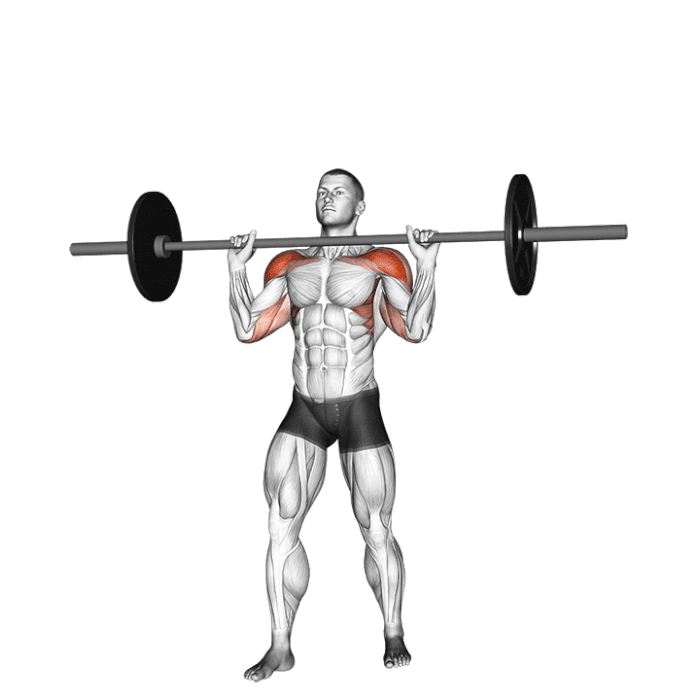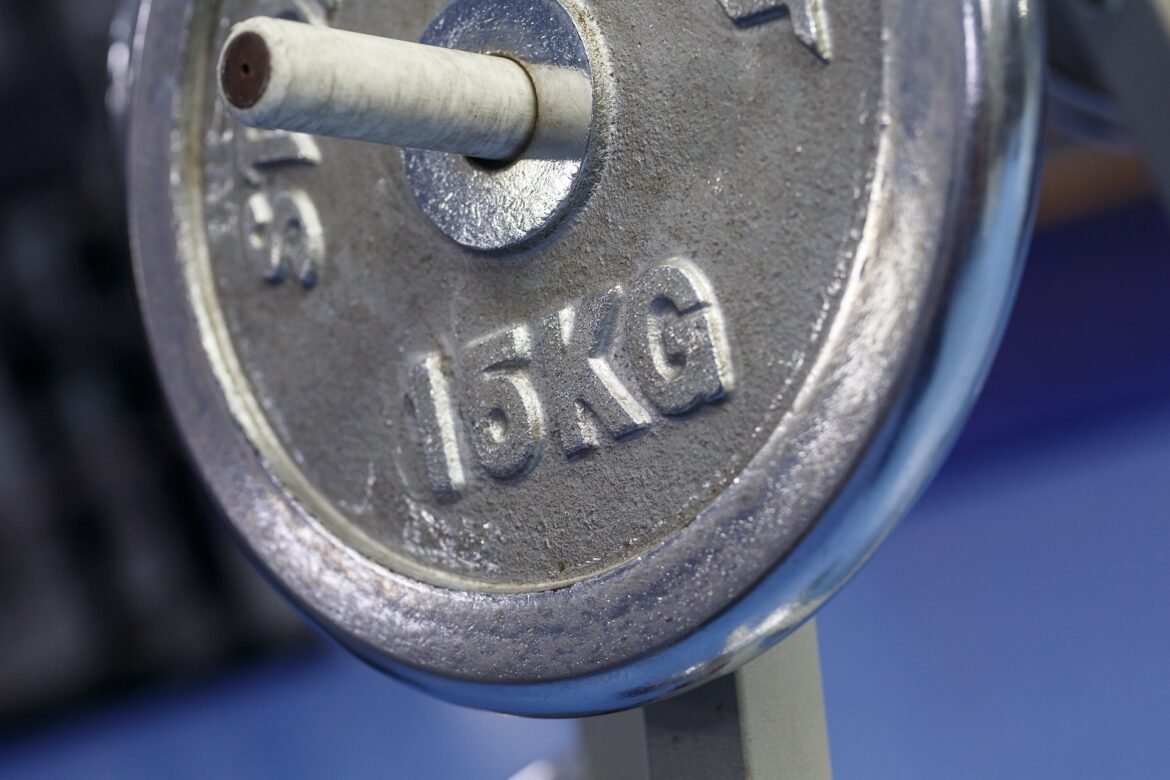Ring Dips
Ring dips are an advanced bodyweight exercise that enhances upper body strength, stability, and coordination. By performing dips on gymnastic rings, you add an extra layer of challenge compared to traditional dips.
It involves performing a dip while suspended on gymnastic rings. This variation of the traditional dip exercise increases the instability, forcing your body to engage more stabilizing muscles to maintain balance and control. Ring dips effectively build strength and size in the upper body, particularly the triceps, chest, and shoulders.
Targeted Muscle Groups

Primary Muscles:
- Triceps Brachii: The triceps are the primary muscle group worked during ring dips, especially during the extension phase.
- Pectoralis Major: The chest muscles are heavily engaged, particularly the lower part, to aid in the upward push.
- Deltoids: The shoulder muscles, particularly the anterior deltoids, help stabilize the shoulder joint and assist in the pushing motion.
Secondary Muscles:
- Rhomboids and Trapezius: These muscles between the shoulder blades help stabilize the shoulder girdle.
- Core Muscles: The abdominal and lower back muscles engage to maintain stability and prevent excessive swinging or tilting.
- Forearms: The forearms are activated to grip and stabilize the rings.
Equipment Needed
- Gymnastic Rings: These are essential for performing ring dips. They should be adjustable and securely mounted to a stable anchor point.
- Anchor Point: Rings need to be attached to a strong, stable surface, such as a high bar or ceiling mount, that can support your body weight.
How to Do the Ring Dips: Step-by-Step Guide
Step 1: Set Up the Rings
- Adjust the gymnastic rings so they are hanging at a height where you can perform the exercise with your feet off the ground. The rings should be slightly wider than shoulder-width apart.

Muscles used in the military press.
Illustration credit © Aliaksandr Makatserchyk
Step 2: Position Yourself
- Stand facing the rings and grasp them with a neutral grip (palms facing each other). Jump or step up to get into the starting position, keeping your body straight and your arms fully extended.
Step 3: Setup Your Posture
- Starting Position: Your arms should be fully extended, and your body should be in a straight line from head to heels. Your shoulders should be slightly elevated above the rings, with your elbows locked out.
Step 4: Perform the Dip
- Descent Phase: Slowly lower your body by bending your elbows and allowing your upper arms to drop below parallel to the ground. Keep your elbows close to your sides and maintain a slight lean forward.
- Ascent Phase: Push through your palms and extend your elbows to lift your body back to the starting position. Keep your body tight and your core engaged throughout the movement.
Step 5: Repeat
- Perform the desired number of repetitions, focusing on controlled movements and maintaining proper form.
Recommended Reps and Sets
- Beginners: 2-3 sets of 5-8 reps with body weight or assistance
- Intermediate: 3-4 sets of 8-12 reps with body weight
- Advanced: 4-5 sets of 12-15 reps, potentially incorporating added weight or advanced variations
Pro Tips for Success
- Engage Your Core: Keep your core tight to maintain body stability and prevent excessive swinging or arching.
- Maintain Proper Form: Ensure that your elbows remain close to your body throughout the movement to effectively target the triceps and chest.
- Control Your Descent: Lower yourself slowly and with control to maximize muscle engagement and reduce the risk of injury.
- Practice Progressions: If you’re new to ring dips, start with assisted variations or ring support holds to build strength and stability before progressing to full dips.
Common Mistakes to Avoid
- Elbow Flare: Allowing your elbows to flare out excessively can put undue stress on the shoulder joints. Keep your elbows close to your body to avoid this.
- Inadequate Depth: Not lowering your body enough can reduce the effectiveness of the exercise. Aim to lower yourself until your upper arms are at least parallel to the ground.
- Excessive Swinging: Using momentum or swinging can decrease the effectiveness of the exercise and increase the risk of injury. Focus on controlled, deliberate movements.
- Improper Ring Height: If the rings are too high or too low, it can affect your form and the effectiveness of the exercise. Adjust the rings to a comfortable height that allows for the full range of motion.
Ring dips are a challenging yet highly effective exercise for developing upper body strength and stability. By incorporating ring dips into your workout routine, you can enhance your triceps, chest, and shoulder muscles while also engaging your core and stabilizing muscles. Focus on maintaining proper form, controlling your movements, and progressing gradually to achieve the best results. With practice and dedication, ring dips can significantly contribute to your overall strength and fitness goals.
